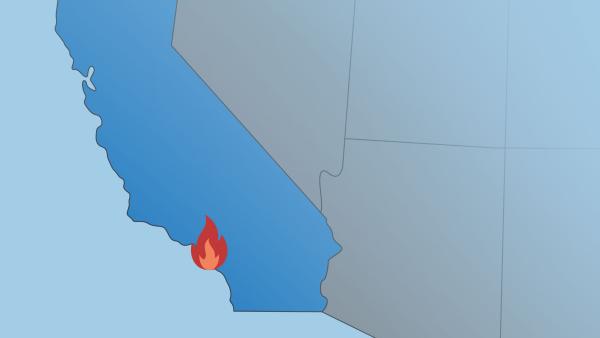IRS Extends Tax Relief for Southern California Wildfire Victims
The IRS has announced significant tax relief measures for individuals and businesses affected by wildfires and straight-line winds in southern California. These relief measures extend federal tax filing and payment deadlines and provide additional tax benefits to help those impacted recover financially.
Who qualifies for relief?
The relief applies to any area designated by FEMA as part of the federal disaster area. Currently, this includes individuals and businesses in Los Angeles County. More counties may be added as FEMA updates its assessments. Taxpayers can verify eligible areas on the IRS Disaster Relief page.
What are the extended deadlines for filing and payments
Taxpayers in affected areas now have until October 15, 2025, to file federal tax returns and make payments for various deadlines that fall between January 7, 2025, and October 15, 2025. Key deadlines extended include:
- Individual income tax returns and payments (originally due April 15, 2025)
- 2024 IRA and HSA contributions
- Quarterly estimated tax payments due January 15, April 15, June 16, and September 15, 2025
- Quarterly payroll and excise tax returns due January 31, April 30, and July 31, 2025
- Partnership and S corporation returns (originally due March 17, 2025)
- Corporation and fiduciary returns (originally due April 15, 2025)
- Tax-exempt organization returns (originally due May 15, 2025)
Penalties for payroll and excise tax deposits due between January 7 and January 22, 2025, will be abated if the deposits are made by January 22, 2025.
How do my clients access disaster relief?
The IRS automatically applies relief to taxpayers with an IRS address of record in the disaster area. However, those who moved to the area after filing their return or whose necessary records are located in the disaster zone should contact the IRS at 866-562-5227.
Which forms do I need to file for my clients?
The forms required depend on the type of relief your client is claiming:
- For uninsured or unreimbursed disaster-related losses, file Form 4684, Casualties and Thefts, to calculate and report the casualty loss. Attach this form to your client’s individual tax return, typically Form 1040.
- If your client wants to claim the loss in the prior tax year, they will need to file an amended return using Form 1040-X and include Form 4684.
- Be sure to write the FEMA disaster declaration number on the forms (e.g., 4856-DR for the southern California wildfires).
What is the difference between a casualty loss and a casualty gain?
A casualty loss occurs when the cost of repairing or replacing damaged property exceeds the insurance reimbursement or other compensation received. This results in a deductible loss, subject to certain IRS limits.
On the other hand, a casualty gain happens when the insurance reimbursement or compensation received exceeds the property’s cost basis (original purchase price or adjusted value). In this case, the gain may be taxable unless it is deferred under special rules, such as reinvesting in similar property within a specific time frame.
For further clarification or assistance with filing disaster-related taxes, consult IRS Publication 547.
Are there any additional relief options?
The IRS offers additional relief for affected taxpayers, including:
- Disaster-related loss deductions: Uninsured or unreimbursed disaster-related losses can be claimed on either the 2024 or 2025 tax return. Be sure to include FEMA declaration number 4856-DR when filing.
- Exclusion of disaster relief payments from gross income: Payments for necessary personal, family, or property expenses may be excluded from taxable income. Refer to Publication 525 for details.
- Retirement plan relief: Affected taxpayers may qualify for penalty-free disaster distributions or hardship withdrawals from IRAs or other retirement accounts.
Does insurance claim money count as taxable income?
Generally, insurance claim money received for disaster-related losses is not taxable if it is used to restore or replace damaged property. However, if the reimbursement exceeds the original cost of the property, the excess may result in a casualty gain, which could be taxable. Clients should keep detailed records of both the insurance claims and their expenses for repairs or replacements to ensure proper reporting.
Supporting Disaster Recovery
Tax professionals and preparers should stay updated on disaster relief options to support clients effectively. Visit the IRS website for ongoing updates about eligible areas and new measures.
Subscribe to the Drake Tax Taxing Subjects blog for more news and updates like this overview of IRS tax relief options for southern California wildfire victims.
The IRS relief measures are part of a coordinated federal response to assist disaster-affected communities. For additional resources and assistance, visit DisasterAssistance.gov.

